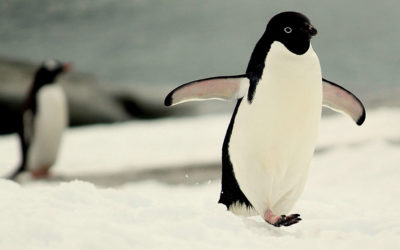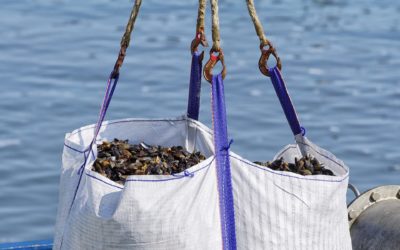Have you heard about a model rocket? Since June 2018, UFF has had a team of students from several courses that design and manufacture rockets — from the construction of the external skeleton to the manufacture of fuel. LUFFT is part of the Student Branch of the institution, known as the Institute of Electrical and Electronic Engineers (IEEE), and is an initiative that aims to enable the students involved in the project to apply the theory learned in the classroom in the construction of a rocket, in addition to participating in national and international competitions in the area. The team’s name, LUFFT, is a pun on the German word luft — which means aerial in German — and its current project consists of a model with a maximum range of 1,000 meters in height.
According to the project supervisor, the professor of the International Relations course, and the graduate program in Strategic Defense and Security Studies (PPGEST), Marcio Rocha, the undergraduates are in charge of the entire production process. “Our prototype has a parachute recovery system and an electronic structure capable of ejecting this device, in addition to reading the speed reached and measuring the altitude reached in real-time. Its body is manufactured with fiberglass, a material that gives strength and lightness to take the required flights,” he explains.
The group is composed of 16 students from different areas of engineering (mechanics, physics, chemistry, etc.) — in addition to having two members of physics and industrial chemistry. Marcio welcomes the creation of teams like this and believes it is a great opportunity for students to integrate the knowledge obtained in class with the practical experience of the profession. “LUFFT, like other engineering teams, allows this option to experience engineering. This motivates students even more to understand the whole theory present in this project, creating a beneficial learning cycle and further improving knowledge in terms of the practical results obtained. As a consequence, there is an increase in motivation to deepen the theory in the classroom,” states the professor.
To ensure a better division of tasks, students are split into five sectors within the team: Aerodynamics, Recovery, Avionics, Propulsion, and Logistics. The group’s head of Logistics, Thaís Silva, explains a little about the students’ work routine. “We strongly believe in the power of collaborative and diverse creations. In the LUFFT Team, we have students from almost all engineering fields, that is, a unique environment that provides group work and interaction with diverse undergraduates, with different visions. The division into subgroups within the team mainly encourages leadership and commitment, being a differential for our academic development. Also, participation in model rocket competitions takes the name of UFF throughout Brazil and encourages us to be models of excellence in this area.”
Between August 9th and 11th, LUFFT will participate in its first experience in model rocket competitions. The championship chosen for the debut was the Latin American Space Challenge (LASC), which will be held in São Paulo and will bring together students and space enthusiasts from all over Latin America. Named Missão Selene, in honor of the Japanese probe “Selenological and Engineering Explorer”, launched on the moon in 2007, the challenge will be a chance not only to put into practice the knowledge acquired in almost a year of work but also to learn from more experienced opponents. “This will be our first competition, so we want visibility. In this event, we will be in contact with several teams that have been there for a longer time and we will certainly have a lot to learn,” highlights LUFFT Avionics Chief, Thainá Fernandes.
Following, students talk about the project and the impact of this experience on their academic lives:
What was the motivation for setting up LUFFT within the IEEE UFF?
Bruno Castro (LUFFT Captain): In mid-2018, I discovered a model rocket. At the time, I also discovered that teams from the state of Rio de Janeiro already participated in national and international championships. I immediately wondered why there was no model rocket team within the university. So, imbued with my passion for aerospace, I contacted the GFRJ (UERJ’s Model Rocket Team), looking for information on how to assemble a team and where to find all the theoretical basis necessary to design and build rockets. After that, I started to assemble and recruit the first members. Then, I signed a partnership with the IEEE UFF student branch, which guaranteed the participation of our team in the institute.
What is IEEE UFF?
Thaís Silva (Head of Logistics at LUFFT): IEEE UFF is a student branch that is part of IEEE, the world’s largest professional organization dedicated to advancing technology for the benefit of humanity. It is a network that contains, on average, 400 thousand volunteer members around the world, and that proposes unique networking. At UFF, we aim to encourage the creation of projects and work in several sectors: 3D printer, WiE (Women in Engineering), representation of women in science, technical visits (Angra dos Reis Nuclear Reactor, Itaipu Hydroelectric Plant, Weg Transformadores, Furnas, ONS and etc.), PES (Power and Energy Society), Speak up (English conversational learning groups), the LUFFT rocket model team, as well as participation in science and technology events and workshops. We are a pole for the dissemination of knowledge related to traditional sciences, which works with emerging and disruptive technologies for the development of co-creation.
What are the main objectives of LUFFT?
Bruno Castro (Captain of LUFFT): Our main objective encompasses three actions: the construction of rockets, training in the management of launches, and participation in model rocket competitions. However, for this to happen, it is necessary that several stages are overcome, highlighting the following:
- The team is necessarily multidisciplinary. The members are from different courses, and you learn in practice that, in a real engineering project, you need to work with professionals in different areas and with different skills;
- An interpersonal relationship is something constantly present in the team. Everyone needs to understand their tasks, the existing hierarchy, and the tasks and responsibilities of colleagues so that the end result is positive;
- The motivation of the members is something that needs to be constantly exercised. Being part of a project with practical activities requires a commitment to participate in the programmed actions and, at the same time, fulfill the academic tasks of the regular course.
Explain your project, please.
Bruno Castro (Captain of LUFFT): Our current project, Missão Selene, consists of building a rocket that reaches a peak of 1,000 meters. The projectile is launched from an electric ignition, has a parachute recovery system, an onboard electronic system capable of ejecting the parachute, reading speed, and measuring altitude in real-time so that we can carry out the analyzes. Our fuselage (rocket body) is made of fiberglass, super light, and resistant material, our engine is made of stainless steel, and it has solid-type propellants inside, that is, our fuel is not liquid like people tend to infer. We design and manufacture every part of the rocket: from the outside to the fuel. For everything to happen in an organized way, our team is divided into sub-cells as follows: Aerodynamics (where we deal with flight stability); Recovery (where the focus is on the design, development, and implementation of the parachute system); Avionics (referring to all on-board electronics and also electrical ignition); Propulsion (related to the propulsion system, design, and manufacture of the engine and propellant); and Logistics (responsible for all the administrative part, and solving problems of transportation, equipment, etc.).
How did the team prepare for the Latin American Space Challenge (LASC)?
Bruno Castro (LUFFT Captain): We started designing Selene at the same time that we were acquiring knowledge about how to build it. Since March of this year, we have a rocket ready to be used and we are carrying out propulsion tests so that we can validate the propulsion system and, from that, have a green light to carry out our flight tests.
What are your expectations for the competition?
Letícia Camargo (Member of LUFFT): Since when we started the project, we have been at a fast pace and doing everything we need to make a dream come true. In this competition, our intention is to present who LUFFT is and show everything we have accomplished in this almost one year of work. In addition, we want to make sure that all our effort was worth it!
What is the feeling of representing UFF at such an event?
Letícia Camargo (Member of LUFFT): Competing in this type of dispute representing the university motivates us to keep trying. Amid so much hostility towards public higher education, it is very important to show what we do within the university and represent it brings us a sense of pride for being members of UFF.




